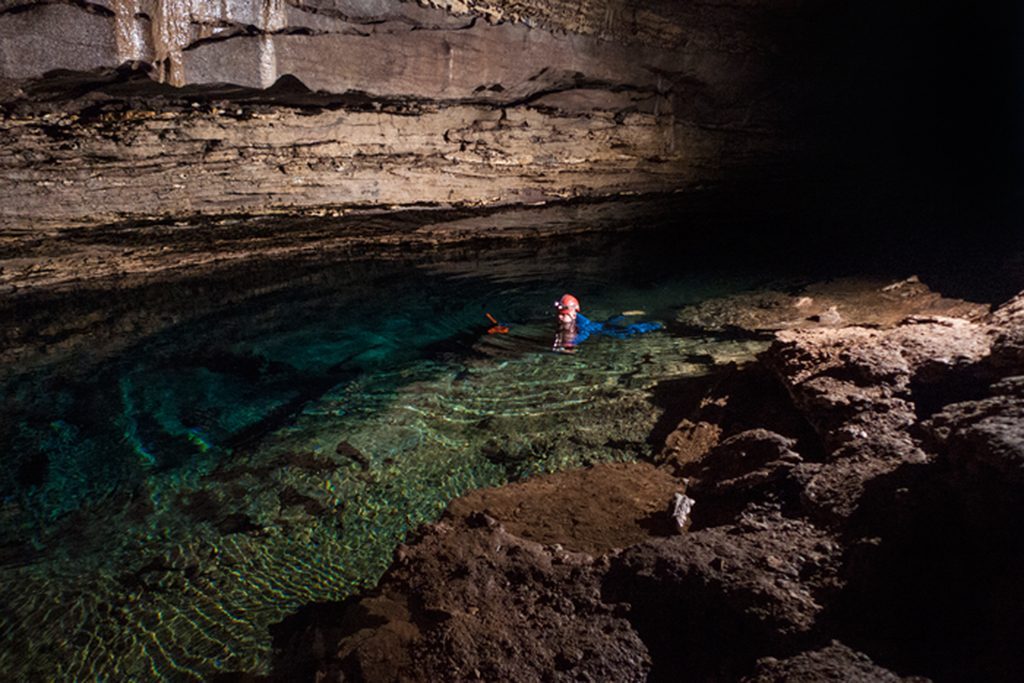
Not only is the city of Huntsville, Alabama, a center for high-tech and rocket-making, beneath its urban terrain lies a cave with unique residents.
Below the northwest of the city of Huntsville lies Shelta Cave, a half-mile-long cave system that is home to a unique variety of cave-dwelling crayfish. In the 1960s, biologists discovered twelve different types of such crabs there. “No other cave system in the United States is known to have more commonly occurring cave crayfish,” says Matthew Niemiller of the University of Alabama. Among these species was a cave crayfish, the Shelta cave crayfish (Oronectes sheltae), which is only found in this one cave in the world.
“To our knowledge, only 115 individuals of this species were found between 1963 and 1975,” says Niemiller. But in the 1970s there was a complete collapse of the subterranean ecosystem, which also drastically reduced the population of cave crabs. Only one specimen of the Shelta’s cave crayfish was discovered in 1988. “After decades without a sighting of this crayfish, and given the dramatic decline of other aquatic cave fauna at Shelta Cave, some, including myself, have feared that these crayfish may have gone extinct,” explains Niemiller.
But in 2019, while examining the cave waters, the biologist made an unexpected discovery: “I was snorkeling in the 4.50 meter deep water of the North Lake in the cave when I saw a small crayfish below me,” he reports. “I dived deeper and noticed that the claws of this crab were longer and narrower than those of the other crab species.” Upon closer inspection, this crab turned out to be a female of the crab species Oronectes sheltae, which was believed to be extinct. In the summer of 2020, he and his team also came across a second specimen, a male.
Our photo shows the explorer snorkeling in the subterranean waters of Shelta Cave. He explains that while the rediscovery of the rare cave crayfish is encouraging, it is not a general all-clear for these and other inhabitants of this cave, as the researcher emphasizes. Because other types of crabs that once appeared in Shelta Cave have also disappeared since the collapse of the subterranean ecosystem – and life in this cave system is still acutely threatened: “The urbanization of the area above the cave is changing the rate at which water seeps into the cave, In addition, pollutants such as pesticides and heavy metals are increasingly penetrating the cave system,” explains Niemiller.